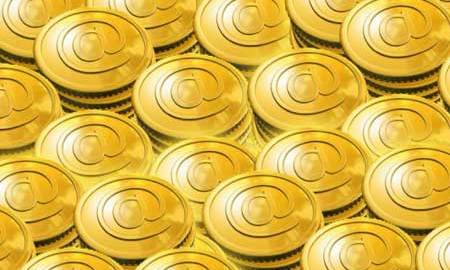Future of Money: Classifying Virtual Currency Systems

By Aaron Smith
Since the beginning of the digital age, pundits have hailed virtual currencies as the future of our civilization’s money. While it may be difficult to imagine a cash-less society, it’s important to understand that money is merely an agreement to use something as a medium of exchange. The function and purpose of cash is therefore assigned by our cultural and social systems, not any intrinsic value. So as our society evolves, and our physical and digital economies converge, how does our monetary system evolve along with us? Whether exchanged via virtual worlds, social games, or mobile apps, virtual currencies hold real implications for our global economy, fundamentally altering how we conduct transactions with one another.
Technological advancement has coincided with currency reform throughout human history. The advent of writing in early Mesopotamia provided new ways to number commodities, forming the basis of accounting. Machine-minted coin production in the industrial age brought England out of a reliance on precious bimetals and towards a sustainable monetary system. And the personal computer of the information age enabled more convenient transactions through e-commerce and credit card processing. We now find ourselves in a hyper-connected digital world, with start-up entrepreneurs and corporate giants all competing to shape the manner in which we exchange 21st century goods and services.
To better understand the virtual currency landscape, we might observe four broad trends emerging: mobile fiat currency, corporate value currency, virtual world currency, and peer to peer currency. Although the nuances of these categories may blend together, I draw distinctions at their core function — why and how the currency is created, circulated, and adopted.
Mobile Fiat Currency
Mobile fiat currency allow consumers to send and transfer legal tender using their mobile phone. With Square, people can pay by swiping a credit card through a plug-in device on the iPhone. Similarly, Pay Pal’s Card.ioapp scans a credit card number using nothing but the phone’s camera. Other platforms, like Google Wallet, Zong, and Isis, invest in “Near Field Communication (NFC)” technologies, which enable consumers to tap their smartphone on a reader to complete a transaction. Yet because NFC relies on consumers carrying NFC enabled phones, merchants installing NFC equipment, and complex alliances with various stakeholders, it will take time for “wave and pay” to reach mass adoption.
To really see mobile payment in widespread practice, look no further than Africa, where the lack of credit card penetration has brought mobile innovation to the forefront. One popular service called M-Pesa sends funds via text messages. Customers hand over cash to any one of thousands of participating retailers. They are then credited virtual money on their phone, which can be dispersed through SMS or exchanged back for cash at any time. As of 2010, 9.5 million people subscribe to M-Pesa and collectively transfer the equivalent of 11% of Kenya’s GDP each year.
Another type of mobile fiat currency involves “carrier billing,” whereby a consumer pays using their phone number (rather than their credit card number), and the charges are billed directly to their phone bill. By linking your phone to your Pay Pal account, you can do things like book a hotel room inunder 60 seconds or buy a friend a beer with atweet. With these services, companies stand to profit from even more frictionless payments than we have now.
Corporate Value Currency
Corporate value currencies are rewards or credits that are acquired by engaging with a company or participating in a loyalty program. There are numerous examples — Shopkick’s Kickbucks announce deals to consumers as soon as they enter a store; GetGlueprovides entertainment discounts to people who “check-in” to the shows they watch. Corporate value currencies are often associated with the gameification movement, helping people quantify their progress and unlock new achievements. Denominated in points, credits, mileage, and badges, these currencies are inextricably tied to a company’s product or service, rather than any official tender. Their value, then, has to do with demonstrating mastery, redeeming prizes, and earning freebies.
Facebook Credits, the universal currency for buying social games and applications on Facebook, has integrated with traditional promotions and deals. When you make purchases at restaurants or retailers, you can now have Facebook credits automatically deposited in your account. Facebook and American Express even have apartnership that lets users pay for exclusive virtual goods in Farmville by using their American Express Membership points. These corporate value currencies work because people perceive their value as higher than their cost. In reality, Facebook Credits cost next to nothing, about $0.10 each. But with 5.8 million people playing FarmVille and 90.6 million playing CityVille every month, Credits have become more desirable and meaningful than a standard store coupon.
Virtual World Currency
Virtual world currenciescirculate within internal virtual world communities. Accumulating fictional money helps improve one’s experience of the game, whether that be by acquiring accessories, weapons, land, or $330,000 space stations. In 2009, Americans spent $620 Million dollars in the virtual world industry. Second Life, one of the largest virtual world platforms, collected $144 million in Q2 of 2009, a higher GDP than 19 countries. These massively-mutiplayer-online games (MMOPGs) are usually based off subscription fees or virtual goods sales and are designed primarily for leisure, play, and entertainment.
Buying virtual goods signal players’ social standing, showcases their virtual identity, and opens more doors for experience. Yet in-game currency takes time to earn. In World of Warcraft, “virtual workers” spend long hours performing monotonous tasks in order to accumulate gold, level up their characters, and sell the avatars for real money. Such “gold farming” raked in an estimated $3.0 billion dollars in 2009, indicating how virtual world currencies can turn into real money profits.
Peer to Peer Currency
Peer to peer currency is driven by networked communities and serve as an alternatives to centralized bank currency. It has gained momentum alongside Local Exchange Trading Systems (LETS) and time banks, which have provided complimentary currencies for the past 30 years. The most notable digital form of currency is Bitcoin, a system operated by computing networks that collectively encrypt, verify, and process transactions, almost like a Bittorrent for cash. Bitcoin has distinct advantages over banks – it’s open source, non-national, always available, stable in supply, and policed by its users rather than an organization. At the same time, a security breach in summer 2011 compromised hundreds of accounts and led to the theft of approximately $500,000 dollars worth of virtual money. Since then, Bitcoin’s biggest challenge has been to regain public confidence in its security and sustainability.
Peer to Peer currencies approach how they store value in different ways. The pricing of Ven rises and falls based on a basket of currencies, commodities, and carbon components rather than being tied to a single currency like the dollar. Ripple, a decentralized open source payment method, positions everyone as a banker; people issue credit to each other based on real-life relationships. Once again, the goal is to shift ownership of money away from centralized banks and towards everyday citizens.
Other peer to peer communities trade, swap, and barter goods and services without a medium of exchange. These “collaborative consumption” platforms range from housing, to skills, to free time, to recyclables. Swap.comis the largest of these communities, facilitating trade of over 1.5 million personal items. While there are advantages to standardized currency, collaborative consumption holds tremendous environmental promise, helping people save money, save resources, and strengthen a community through sharing.
The Future of Money
What other forms of money might we see? We may be headed towards a system that converts personal and social data into online currency. Companies today quantify and commoditize our online activity for free, but that may not always be the case, especially as start-ups develop “personal data lockers” for people to store information about themselves. If the technology takes off, we might imagine a future in which users trade their personal data to advertisers in exchange for something of value in return.
Of course, virtual currencies and e-commerce platforms have risen and fallen faster than consumers have had time to adopt them. As Microsoft’s former CTO Nathan Myhrvold prognosticated in a 1994 Wired article: “Today we have a zillion different ways of doing financial transactions. There’s cash, checks, credit cards, debit cards, wiring money, traveler’s checks … each of these has a particular point. We’re going to see that much diversity in digital money.” Indeed, each type of virtual currency affords unique advantages and disadvantages for specific situations. It is a future not of digital money, but of digital monies, and to shape it, we need to better understand where our money system has been, where it is now, and where we would like it to go next.
Aaron Smith is a Researcher with the Hybrid Reality Institute, a research and advisory group focused on human-technology co-evolution, geotechnology and innovation. Follow Aaron on Twitter @AaronSmith50





